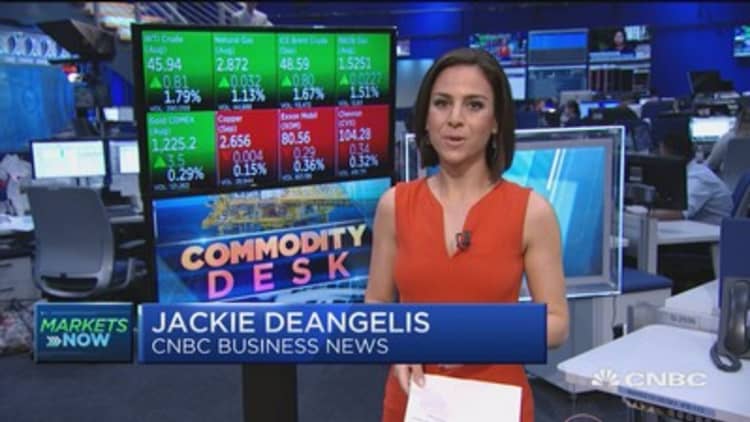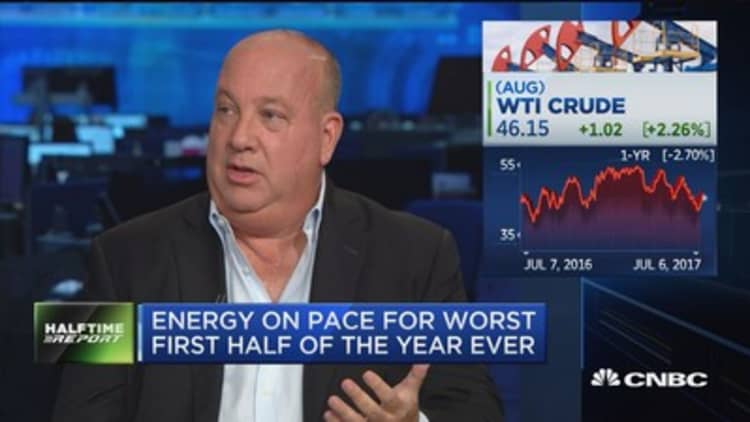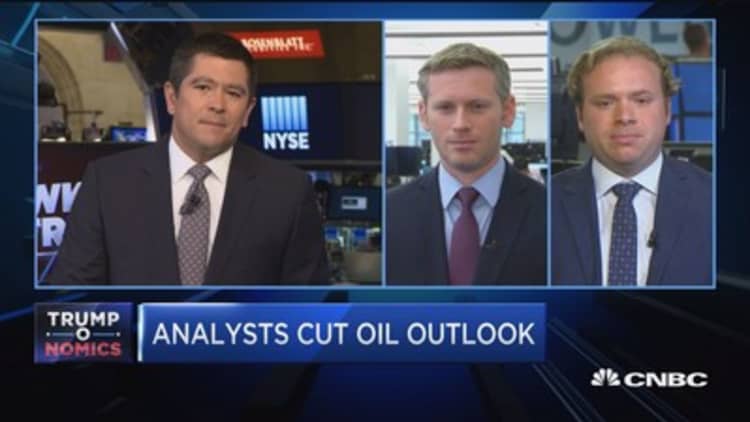
Oil prices posted a gain on Thursday, but a rally underwritten by U.S. data showing a big drop in crude oil and gasoline stocks faded in afternoon trade.
U.S. West Texas Intermediate (WTI) crude futures ended Thursday's session 39 cents, or 0.9 percent, higher at $45.52 per barrel, off a session high of $46.53. The contract plunged about 4 percent in the previous session.
Brent crude futures were up 10 cents at $47.89 per barrel by 2:42 p.m. ET (1842 GMT), after earlier rising to $49.18. They tumbled 3.7 percent on Wednesday.
U.S. crude stocks fell 6.3 million barrels, the U.S. Energy Information Administration (EIA) said, citing stronger refining activity and reduced imports. That was much more than the draw of about 2.3 million barrels analysts had forecast.
"Inventories were better than the market anticipated and were seeing gains in crude and products futures as a result," said Andrew Lipow, president of Lipow Oil Associates in Houston.

U.S. gasoline stocks dropped 3.7 million barrels in the most recent week, far exceeding the expected drop of 1.1 million barrels. Still, gasoline inventories remain about 6 percent above seasonal averages, so investors will watch for July data to see if demand is strong enough to whittle down those stocks.
U.S. gasoline futures were last up about 1 percent.
The rally "just couldn't sustain itself on those data points," said John Kilduff, founding partner at energy hedge fund Again Capital.
He noted that weekly U.S. crude production in the Lower 48 states rose by 105,000 barrels a day after dipping last week. Gasoline demand also remains relatively weak, he said.
The oil price has tumbled from one-month highs just below $50 following evidence of rising exports and increased production from OPEC, despite the group's commitment to bolster the market by cutting production.
Some market watchers believe the OPEC will need to make further output cuts to offset thriving shale production in the United States.
Russian Energy Minister Alexander Novak said the global pact by OPEC, Russia and other producers to cut oil output had dampened price volatility and was reducing bloated inventories, so no immediate extra measures were needed to prop up prices.

OPEC and other producers led by Russia agreed to cut production by almost 1.8 million barrels per day (bpd) from January this year to rein in inventories and support prices. The deal runs to March 2018.
A number of investment banks in the last two weeks have reduced oil price outlooks, citing worries that the glut could extend into next year.
Bank of America Merrill Lynch cut its average Brent forecasts to $50 this year and $52 per barrel in 2018, from $54 and $56 before.
Bernstein Research reduced its average Brent forecasts for 2017 and 2018 to $50 per barrel, from $60 and $70 previously.
Saxo Bank said oil prices could rise towards $55 in coming months, but it expected lower prices at the end of the year and into 2018.
— CNBC's Tom DiChristopher contributed to this story.

